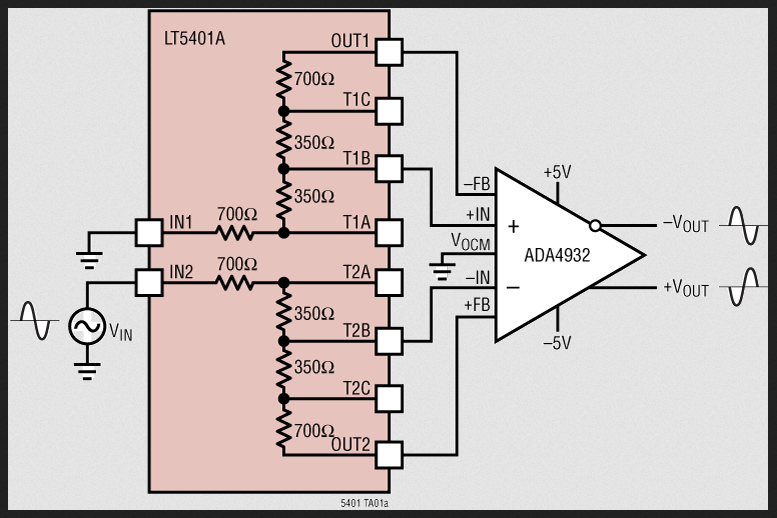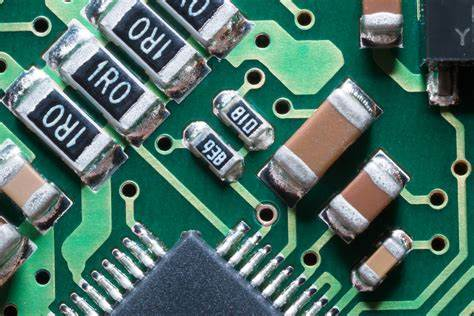Paired resistors with low-temperature drift are critical to many precision analog circuits.
The previous part discussed the need and “why” for matched resistors, as well as errors due to tolerance and TCR. This section transitions to their physical embodiment and looks at the “how” of obtaining needed matched resistors to minimize errors, temperature-related effects, and other shifts.
Q: What are some of the performance factors to consider when deciding which resistor technology to use?
A: As usual, there are many factors involved. First, of course, there’s initial accuracy as defined by tolerance followed by TCR. For highest-precision applications, there are issues of long-term stability and drift which are independent of temperature changes. There are also concerns about thermal time constants, power handling, size, and cost.
Q: What is the most obvious technique for matching resistors?
A: The “manual” approach was used in the early days. While it is possible to achieve very high matching using a Wheatstone bridge and null-current detector, doing so is a time-consuming process and only matches the initial value but not temperature-induced drift. This matching can be done by the end-user as a pre-production step, in a post-production calibration phase, or by the resistor vendor. It is no longer used except in very unusual circumstances.
Q: What are other approaches?
A: Wirewound resistors have been used since their resistance is primarily a function of the wire length. The negative aspects of this are that it takes a lot of wire to make even a modest-value resistor, so there’s cost and bulk.
With attention to detail, they can be precise, but they are not stable. The reason is that copper has a very high TCR of 0.393%/°C (~4000 ppm/°C), so the resistance change of copper wire versus temperature is significant, while other wire materials are much more costly. In contrast, a modern high-performance stable resistor has a TCR ranging from less than one ppm/°C to a few tens of ppm/°C, a difference of more than three orders of magnitude.
Q: These approaches sound complicated and inadequate; are there superior alternatives?
A: Yes, due to modern materials science and material-processing technologies. For example, the Vishay Precision Group has developed a proprietary Bulk Metal Foil material and process with excellent characteristics. Many vendors of resistors use precision thin film, thick film, and other technologies.
Q: What are the advantages of these thick and thin film approaches?
A: First, they are precise because the resistors can be laser-trimmed to a precise value. Second, they are produced on a common substrate, so the different resistors have very similar TCR and other attributes. Cost is relatively low since they can be mass-produced, similar to silicon ICs processing, and even combined with the die of those ICs. Also, it is possible to produce not only a 1:1 ratio but also other useful ratios, such as 2:1 and 10:1.
Figure 1 shows the key attributes of some precision, high-accuracy, and low-TCR technologies.


Q: In addition to individual resistors, are these resistors offered as a single component with integral pairs or groups?
A: Yes, they are for each of the technologies shown. For example, Texas Instruments offers the RES11A-Q1, an automotive-qualified, matched, thin-film resistor divider with 1-kΩ inputs. It is implemented in thin-film silicon-chromium (SiCr) using a high-performance, analog CMOS process (Figure 2).
The component features high ratio-matching precision, with the measured ratio of each divider within ±120 ppm (typical) of the nominal value. A typical application would be a precision difference amplifier (Figure 3).

Q: Do other vendor devices offer similar performance?
A: The Analog Devices LT5401 matched resistor network for precision amplifiers in a 10-lead MSP housing features excellent matching and tracking, including:
- ±0.003% resistor ratio matching (maximum)
- 5dB CMRR (minimum)
- ±25ppm gain error (maximum)
- ±0.5ppm/°C matching temperature drift (maximum)
- 8 ppm/°C absolute resistor value temperature drift
- Long-term stability: <8 ppm at 6500 hours
- –55°C to 150°C operating temperature
In a representative application, it is used as part of a fully differential amplifier circuit with the ADA4932 op amp to implement single-ended to differential conversion at a gain G = 1 (Figure 4).

Q: Are these resistors only available as separate devices?
A: No, some vendors have incorporated them into the IC die of the op-amp itself. For example, the Analog Devices LT1997-1 is a precision, high-voltage, gain-selectable difference/current-sense amplifier. It is optimized for high-side measurement of the voltage across a current-sense resistor, functioning as a one-chip solution to amplify and level-shift voltages accurately using no external components (Figure 5).

It features:
- 109 dB minimum CMRR (gain = 10)
- 012% (120 ppm) maximum gain error (gain = 10)
- 1 ppm/°C maximum gain error drift
Q: Why would you use a discrete-resistor pair or multi-resistor network rather than a single-IC which functions as a fully integrated solution?
A: As usual, it’s an issue of priorities and tradeoffs in performance, parameters, and availability. In general, the higher-precision discrete solutions offer the best performance but at a higher cost in dollars and board space. Perhaps the amplifier features you want are not offered with integral resistors, so you have to go to the two-device solution.
However, you may not need that higher level of performance while an amplifier that works well enough is available with integral resistors, which also simplifies board layout and helps maintain thermal balance. Note that individual discrete resistors have to be placed on the PC board with careful attention to airflow, self- and ambient heating, layout and parasitics, and other issues (Figure 6).

In addition to the many issues associated with using these resistors, there’s a subtlety that may affect the highest-performance designs. Except in unusual cases, the self-heating of matched pairs of equal ohm value will be identical, so their dissipation and resultant drift will also match.
But for matched resistors of unequal value, such as in a voltage divider, this is not the case. Consider a 10:1 divider: the “10” resistor will dissipate ten times the power of the “1” resistor (P = I2R) and, therefore, will have higher self-heating and thermal drift. This difference has to be factored into the signal-chain model and error budget.
Q: How much more can be said about this topic, which seems simple since it involves just passive components?
A: There is an amazing amount of qualitative and quantitative information available on this topic. The information spans the subtleties of fabricating these resistors, analyzing them within the worst-case error budget over time, temperature, and other factors, and physical placement subtleties. Vendors of these components offer comprehensive application notes and insights. Even if you are not interested in the underlying materials-science or fabrication aspects, their collateral provides valuable “how to choose and use” information.
EE World related content
Wheatstone bridge, Part 1: Principles and basic applications
Wheatstone bridge, Part 2: Additional considerations
Error analysis in temperature sensing with NTC and silicon-based PTC thermistors: Comparing the Ratiometric and Absolute methods
LVDT electronics, Part 1: Excitation and demodulation
Input bias current cancellation in bipolar op amps
External references
Vishay Precision Group, “Discrete Resistors vs. Networks: Making the Right Choice”
IBE Electronics, “About Matching Resistors in Electronic Circuits”
Hillman Curtis, “Resistor Matching in Analog Layout: Tips and Best Practices”
Electronic Product Design & Test,“Matched resistors maximise amplifier performance”
Analog Devices, “Precision Resistor Network”
Analog Devices, “Matched Resistor Networks for Precision Amplifier Applications”
Analog Devices, “A Deeper Look into Difference Amplifiers”
Texas Instruments, “Product Overview: Navigating Precision Resistor Networks”
Texas Instruments, “Difference Amplifiers—the need for well-matched resistors”






Leave a Reply